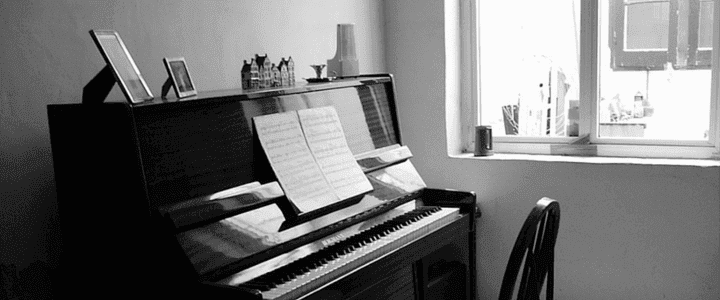You walk into your sheet music store and start browsing. You look at the method books, technique books, repertoire… and then your eyes see something else. You pick it up and see it is called a “fake book.” An odd name for a real book. You open it up and see that it contains music. So what exactly is it?
A piano fake book allows you to read and play music on your piano. But unlike your typical books, which contain the score as written by the composer or arranger, a fake book is more of a reference for the songs. Generally, the songs are written much more concisely, or are abbreviated with only the melody and chord names written in. This gives you the skeleton for playing the song. But what makes a fake book very interesting is that because the song is concise, you can add your own personal touches, your own ornamentation, and your own improvisation. Not that you can’t do this with a typical score, but with the abbreviated score, it’s easier to explore and get creative.
Sounds intriguing, right? Keep in mind, most students won’t be able to pick up a fake book and know how to play. You need to have the necessary knowledge and abilities first. For example:
- You need to know how to identify notes in both clefs on the staff and locate them on the keyboard. This will allow you to play the melody in piano fake book songs.
- You need to be able to decipher and play at least a few chords.
- You then need to be able to play the melody and chords together. This makes the tune in the fake book identifiable.
If you haven’t mastered these basics, then work with your piano teacher until you get reasonably proficient with them; otherwise, you won’t be able to use your fake book to create your own style of songs.
With the three points above, you can play the song as written in the fake book, which is a good start. But how do you make the song your own using a piano fake book? Here are some ideas:
- Learn to identify the chords that work well with the melody. Many piano fake books provide chord suggestions that you can easily supplement with additional chords to make progressions more interesting.
If you still need help, ask your teacher to demonstrate what the basic song sounds like in the fake book, then show you how little changes can go a long way to make the song sound more interesting and alive.
There is one final issue: with all of the different ways of improvising songs, why is the music called a fake book? Several reasons. First, they allows musicians, such as those who play at weddings, to get a feel for songs they have never played before, thus letting them pretend or “fake” their way through song requests. Another reason is that in the early 20th century, fake books were illegal because no royalties were paid to the owners of the copyright. Now, however, they are legal and can be purchased in many online and brick-and-mortar stores.
Whether you want to learn the Beatles, Miles Davis, or Lady Gaga, you can find piano fake books for every genre to help you develop not only your technical and theoretical piano skills, but your artistic abilities, too. It’s a great way to learn. Have fun!
Photo by Maltagirl
Shanika


